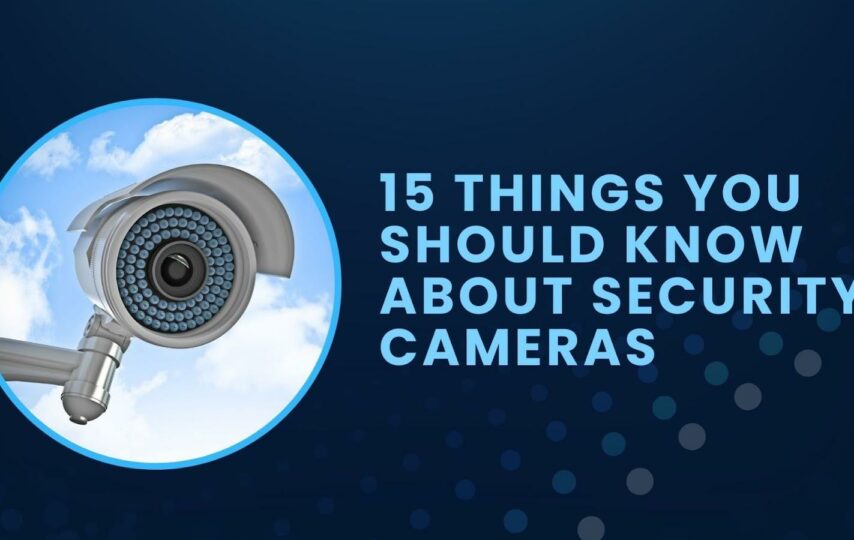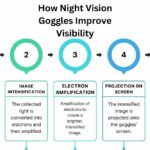Having security cameras at home has become very common these days. Cameras enhance the security of people’s homes. New cameras are also affordable for most families. This article talks about 12 need-to-know facts about security cameras. These will help you choose and set up cameras for your home.
1. Video Quality
Security cameras capture video to show what is happening around your house. Sharp crisp video makes it easy to see details like people’s faces clearly. Or to read license plate numbers of cars entering your street. For the best quality, pick a camera that shoots video at 1080p high-definition or 4K resolution. 4K video is the clearest.
Cameras also need a wide dynamic range. This technology lets cameras adapt when lighting conditions change. For instance, when bright sunlight changes to dim evening light. This results in evenly lit videos at all times of day. Finally, the quality of the lens also plays a significant role. Lenses focus the light perfectly so videos look sharp, with no distortion.
2. Talking To Visitors
Certain security cameras are equipped with built-in microphones and speakers. This allows 2-way talking between you and visitors at your door. You can hear what a guest says. And can also respond through the camera’s speakers. All this can be done from your smartphone app even when you’re away from home.
3. Smarter Motion Detection
Standard security cameras start recording video when they detect movement. Advanced cameras also send custom phone alerts when a person enters your home. Some can even recognize familiar faces like family members. And only send alerts for unknown people. This advanced motion detection enhances your security.
4. Wired vs Wireless Cameras
Wired cameras require experts for installation. Because cables must connect them to power and internet routers inside your house walls. But once set up, they work very reliably. Wireless cameras are very quick to install on your own. You simply place them anywhere inside or outside your house. However, they operate on batteries that need replacement once they are drained.
5. Rain or Shine
Weatherproofing is essential for cameras installed outdoors. Check the outdoor rating before you buy a camera model. This ensures it will withstand rain, summer heat, or winter snow in your area. Some all-weather protective features cameras can have:
Waterproof outer covering to prevent moisture damage. Interchangeable lenses (wide-angle, night-vision etc). A durable plastic dome cover to shield the camera body itself.It is crucial to have one or more of these features for outdoor security cameras.
6. Seeing Clearly At Night
If you want to monitor around the house both night and day, night vision matters. Most cameras today can see up to 25 feet or more in the dark. Advanced models offer over 100 feet night range. This allows seeing farther out on your property after sunset.
During night mode, cameras switch to black and white vision. This provides more details compared to grainy color video in low light conditions at night. Strong infrared LEDs around the camera lens emit light that is invisible to humans. But the camera sensor detects this light to deliver excellent quality black and white night video.
7. Viewing From Your Phone
A major benefit of smart security cameras is being able see video feeds remotely. Manufacturers provide free apps for installation on your iOS and Android mobile devices. This allows tapping into your cameras from anywhere in the world. You can view live video streams. Playback recorded clips for past incidents. And control features like motion alerts. You have full camera access at your fingertips 24/7.
8. Secure Video Storage
Modern security cameras rely on digital storage versus old videotapes. Footage can be saved to cloud servers over the internet for safety and convenience. Many providers give limited online cloud backup for free. But larger storage for 24/7 recording needs paid plans.
Another method is local storage on microSD cards inserted into the cameras. But there’s the risk of losing video proof if cameras get damaged or stolen. Cloud backup avoids this by saving videos remotely.
9. Five Common Camera Styles
Various camera types are made to suit different home security purposes:
(i) Bullet Cameras: Named for their long cylindrical shape. Ideal for monitoring driveways and backyards.
(ii) Dome Cameras: Are round in shape to be installed on ceilings. Give a wide viewing angle to see entire rooms.
(iii) PTZ Cameras: PTZ stands for Pan, Tilt and Zoom. These high-tech cameras can remotely pan left/right. Tilt up/down. And zoom in close with sharp clarity.
(iv) Hidden Cameras: Tiny cameras disguised as everyday objects. Enable discreet video recording without anyone noticing.
(v) Doorbell Cameras: As the name suggests, these are video doorbells to see and communicate with visitors.
10. Field of View
An important decision is a camera’s field of view or FOV. This refers to how wide an area the camera can see. Typical lenses offer 70-180 degree diagonal FOV. So 180 degrees covers the maximum area without blind spots. But image edges may appear slightly distorted. Based on placement, pick a FOV wide enough to properly cover the space you want to monitor.
11. Night Vision Color
In very low light, even advanced cameras can only see black and white. Changing lighting technology is improving night color video. But the tradeoff is it’s less clear than black & white which shows more identifiable details. For now, crisp night vision remains the best way to guard homes after dark.
12. Detecting People and Vehicles
Basic motion sensors pick up all movement in view – people, animals, trees blowing etc. Smarter cameras can separately detect humans and vehicles only. When a person walks or car rides onto your property, custom alerts are triggered. And cameras can accurately track subjects moving from one camera’s view to the next. Enabling monitoring a subject’s path through the entire premises.
Frequently Asked Questions
What camera works best to see my front door at night?
A doorbell camera would be perfect to monitor your front door area after dark. Models with night vision and motion alerts will notify you of any visitors.
I want to check on my dog during the day. Which camera should I get him?
An indoor dome camera mounted in the ceiling captures the whole room to easily watch your dog. PTZ cameras also let you pan, tilt and zoom to follow him around.
How many cameras do I need for my small house?
Start with 3-4 cameras placed at entry points like front & back doors and garage. Add more if you need to cover additional areas.
Conclusion
The installation of home security cameras offers significant benefits. They deter crime and provide peace of mind regarding your family’s safety. I encourage you to go through this guide to learn about cameras. Knowing what features they offer will help pick the right ones. Install cameras both indoors and outdoors to ensure comprehensive protection for your property day and night. With smart camera surveillance, you can relax knowing your home stays protected even when you are away!







